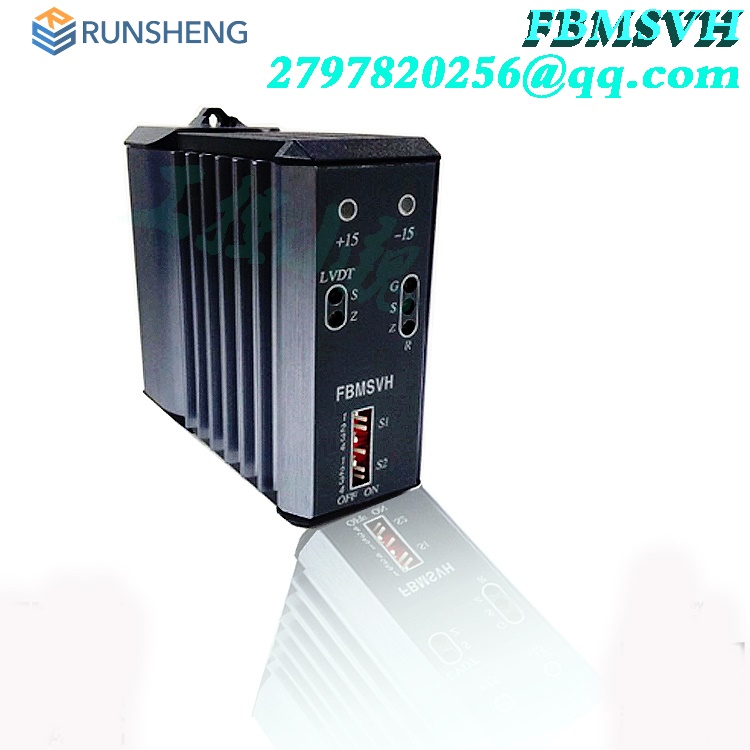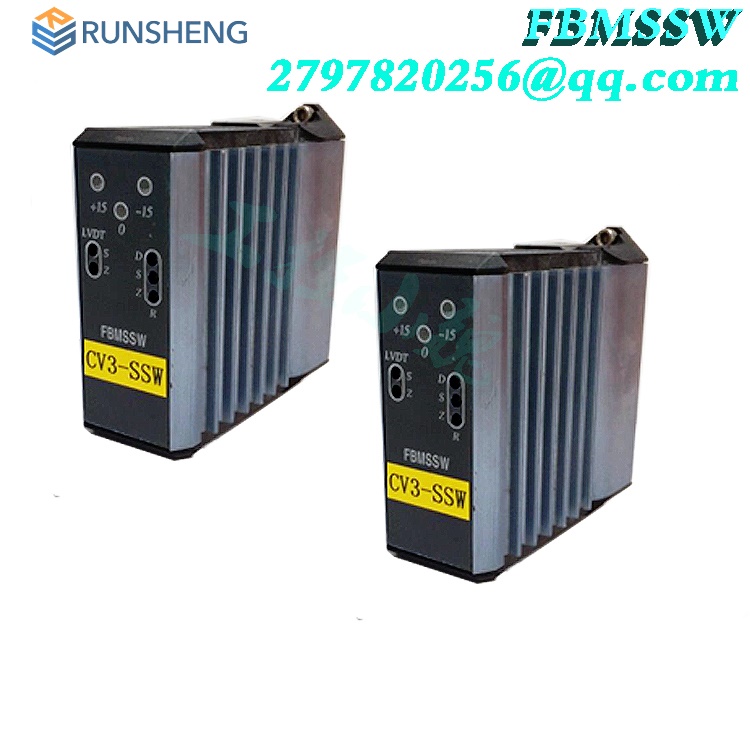FOXBORO FBM233 P0926GX Digital Input Module
Compared to just redundant controllers, this fault-tolerant solution has the following main advantages:
No bad messages are sent to fields or applications that use controller data, as messages are not allowed to leave the controller unless two modules match each other bit by bit on the sent message.
The auxiliary controller is synchronized with the main controller, ensuring the latest data in the event of a failure in the main controller.
The sub controller will detect potential defects before any switching, as it performs exactly the same operations as the main controller.
Two modules receive and process information simultaneously, and faults are detected by the modules themselves.
One of the important methods for fault detection is to compare the communication messages at the external interface of the module.
The message will only leave the controller when both controllers agree on the message to be sent (bit by bit matching).
Once a fault is detected, both modules will run self diagnosis to determine which module has a defect.
Then the defect free module assumes control without affecting normal system operation.
Many products have not been listed yet. For more products, please contact us
If the product model is inconsistent with the displayed image, the model shall prevail. Please contact us for specific product images, and we will arrange for photos to be taken and confirmed in the warehouse
We have 16 shared warehouses worldwide, so sometimes it may take several hours to accurately return to you. We apologize for any inconvenience caused. Of course, we will respond to your concerns as soon as possible.
Field
control processor 280EcoStruxure ™ Foxboro DCS Powerful and Secure EcoStruxure ™
Foxboro DCS Field Control Processor (FCP) can improve operability and
reliability.
summary
The on-site control processor 280 reliably performs regulation, logic, timing, and sequential control, as well as data collection, alarm detection, and notification. Its patented fault-tolerant design provides the highest availability and uninterrupted operation.
FCP280 coexists with and migrates from the earliest Foxboro automation platform hardware. The capacity of FCP280 is twice that of previous controllers, and its performance is three times that of previous controllers, which can improve performance and cost-effectiveness even in the most demanding applications.https://www.axcontroler.com/
OVERVIEW
The Field Control Processor 270 (FCP270) is a distributed, optionally fault-tolerant, field-mounted controller module. The FCP270 performs regulatory, logic, timing, and sequential control together with connected Fieldbus Modules. It also performs data acquisition and alarm detection and notification. The FCP270 connects to the Foxboro Evo control network via standard fiber optic 100 Mbps Ethernet.
The fault-tolerant version of the FCP270 consists of two processor modules. These modules install in adjacent FCP270 slots in a supported FCP270 baseplate for high speed communication between the modules (see Figure 1).
REMOTE
MOUNTING
The FCP270 flattens and simplifies the Foxboro Evo Process Automation System architecture, which only requires field enclosures plus workstations and Ethernet switches. For more information on The Foxboro Evo control network architecture, refer to PSS 21H-7C2 B3.

The field-mounted FCP270 is an integral part of the highly-distributed control network where controllers are closely aligned to specific process units mounted in close proximity to their I/O and the actual equipment being controlled. Coordination between process units takes place via a fiber optic 100 Mbps Ethernet network.
The FCP270 is packaged in a rugged, die cast aluminum housing that does not require venting due to its efficient design. The FCP270 is CE certified, and it can be mounted without expensive special cabinets to prevent electronic emissions. The FCP270 can be mounted in Class G3 harsh environments.
ENHANCED
RELIABILITY (FAULTTOLERANCE)
The unique and patented fault-tolerant operation of the FCP270 greatly improves reliability relative to other process controllers. The fault-tolerant version of the FCP270 consists of two modules operating in parallel, with two Ethernet connections to The Foxboro Evo control network. The two FCP270 modules, married as a fault-tolerant pair, provide continuous operation of the controller in the event of virtually any hardware failure occurring within one module of the pair.
Both modules receive and process information simultaneously, and faults are detected by the modules themselves. One of the significant methods of fault detection is comparison of communication messages at the module external interfaces. Messages only leave the controller when both controllers agree on the message being sent (bit for bit match). Upon detection of a fault, self-diagnostics are run by both modules to determine which module is defective. The non-defective module then assumes control without affecting normal system operations
.jpg)
This fault-tolerant solution has the following major advantages over controllers that are merely redundant:
No bad messages are sent to the field or to applications using controller data because no message is allowed out of the controller unless both modules match bit for bit on the message being sent.
The secondary controller is synchronized with the primary one, which ensures up to the moment data in the event of a primary controller failure.
The secondary controller will have latent flaws detected prior to any switchover because it is performing exactly the same operations as the primary controller.
SPLITTER/COMBINER
Fault-tolerant FCP270 modules connect to a pair of fiber optic splitter/combiners (see Figure 1) that connect to Ethernet switches in the Foxboro Evo control network. For each module, the splitter/combiner pair provides separate transmit/receive fiber connections for Ethernet switch 1 and 2. Fiber cables are connected so that the splitter/combiners pass inbound traffic from either switch to both modules, and pass outbound traffic from the primary module to either switch.

The splitter/combiner pair mounts in an assembly that fastens to the FCP270 baseplates. The splitter/combiner is a passive device that uses no electrical power.
ENHANCED
COMMUNICATIONS
The Foxboro Evo architecture uses The Foxboro Evo control network with 100 Mbps data communications between the FCP270s and the Ethernet switches (see Figure 2).
When used with the FBI200, the FCP270 can communicate with both the 100 Series and 200 Series FBMs (dual baud functionality, which requires I/A Series software level v8.4.1-v8.8 or Control Core Services v9.0 or later). It connects to the 2 Mbps HDLC fieldbus for communications to all 200 Series I/O FBMs and the Siemens APACS+™ and Westinghouse® competitive migration modules.
.jpg)
When used the 100 Series FBMs and 100 Series competitive migration modules, the FCP270 connects to the 268 Kbps HDLC fieldbus, via the fieldbus splitter/terminator. (See “DEVICES SUPPORTED” on page 9.) The optional FBI200 filters the 2 Mbps messages from the 2 Mbps/268 Kbps mixed HDLC fieldbus and only passes on the 268 Kbps messages for the 100 Series FBMs. The FCP270 can also communicate with serial and Ethernet devices, such as PLCs, via Field Device System Integrators. This allows you to connect to new device interfaces without any changes to the controller software.
UPGRADE
OPTIONS
Multiple options are available for replacing control processors controlling 100 Series FBMs with the FCP270 in a Foxboro Evo network.
Cabling the 100 Series FBMs or Migration products to an FCP270 baseplate consists of extending the remote 268 Kbps fieldbus between enclosures. This is accomplished using termination cable assemblies (TCAs) and Fieldbus Isolators (FBIs) to provide connections between primary and extended fieldbus segments. For direct connections from the FCP270 to the 100 Series FBMs, the maximum fieldbus length is 1 km (3200 ft). An FBI100 can be used to extend the fieldbus to 1.83 km (6000 ft).
As with earlier generations of control processors, up to 64 Fieldbus Modules (including 100 Series FBM Expander Modules) attach to the extended bus through Fieldbus Isolators. (Up to 24 Fieldbus Modules, excluding expansion modules, can connect to each isolator.)
FIELDBUS
EXPANSION MODULE 100 (FEM100)
The FEM100 module increases the number of 200 Series (or equivalent) FBMs supported for the FCP270 modules to up to 128 FBMs for typical control usage. The FEM100 provides four Expanded Fieldbus ports, each of which is capable of communicating with up to thirty-two FBMs. This is illustrated in Figure 3.
The FCP270 requires I/A Series software v8.3-v8.8 or Control Core Services v9.0 or later to support the FEM100 module.
The FCP270 baseplate may connect to a Two-Slot Expansion Baseplate which accommodates a single or pair of FEM100s. A Four-Slot Expansion Baseplate is also provided which can accommodate up to two fault-tolerant FCP270s and a single or pair of FEM100s.
For
a description of these baseplates, refer to PSS 21H-2W6 B4.
A pair of FEM100 modules provides redundancy for the Extended Fieldbuses. When both modules are active, the FCP270 sends and receives communications across both A and B buses. In the case of a FEM100 module failure, the FCP270 switches all traffic to the bus with the available FEM100 module until the failed module is replaced.
Warehouse discount goods:
FOXBORO
P0914ZM
FOXBORO
P0916AA
FOXBORO
P0914XA
3500/94
| 145988-01
IS220PAICH2B
DS200DDTBG1A
84152-01
| Bently Nevada
60M100
EMERSON
A6500-RC
EMERSON
A6500-TP
EPRO
PR6424/010-010+C0N021
EPRO
PR6425/010-100+CON011
PRODUCT TAGS
Shanxi Runsheng Import and Export Co., Ltd
Address: 3301, Building A, Wanda Center, No. 175 Jiefang Road, Xinghualing District, Taiyuan City, Shanxi Province
Google email: wkcarshop666888@gmail.com
Industrial Control Sales Consultant: Amelia
Whatsapp: +86 18030295882

